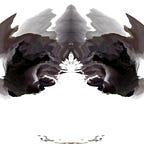Group Study ✷
Week 01 | Nov 12
As we only met briefly the previous day, we began our day considering emotional literacy. What does this even mean? When you say a person is literate in a subject, it generally means they are well-versed, both in their experiences and the material they've read. So we can assume those who are emotionally literate are well-versed in emotion; they are able to express and communicate their own emotions, as well as recognize the emotional state of others.
From here we brainstormed whatever came to mind when thinking about emotional literacy and emotions in general. In addition we began collecting inspirational images—not just projects. This helped us to answer a handful questions for the presentation later in the afternoon (see below the Figma link).
From your design interest/wish, reflect on what drives it: function, critique, curiosity, inspiration?
- Exploring, understanding, and experimenting momentary emotions
- Taboos of certain emotions e.g. Men don’t cry
What is the data you will use and how do you collect it?
- Chemical or mineral properties of tears
- Pressure & tension
- Brain activity
- Blurriness when crying
- Runny nose, puffy eyes, red skin, etc.
How will you map it?
- Chromatic mapping of tears
- Lighting
- Air pressure
Are you using a metaphor?
- Physiological changes
- To be further explored
How would you like to fabricate it?
- Pressurized air
- Minerals & chemicals from tears
- Fabrics
- Fluids
